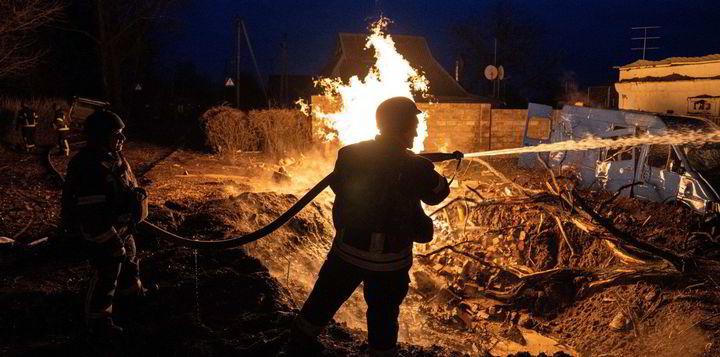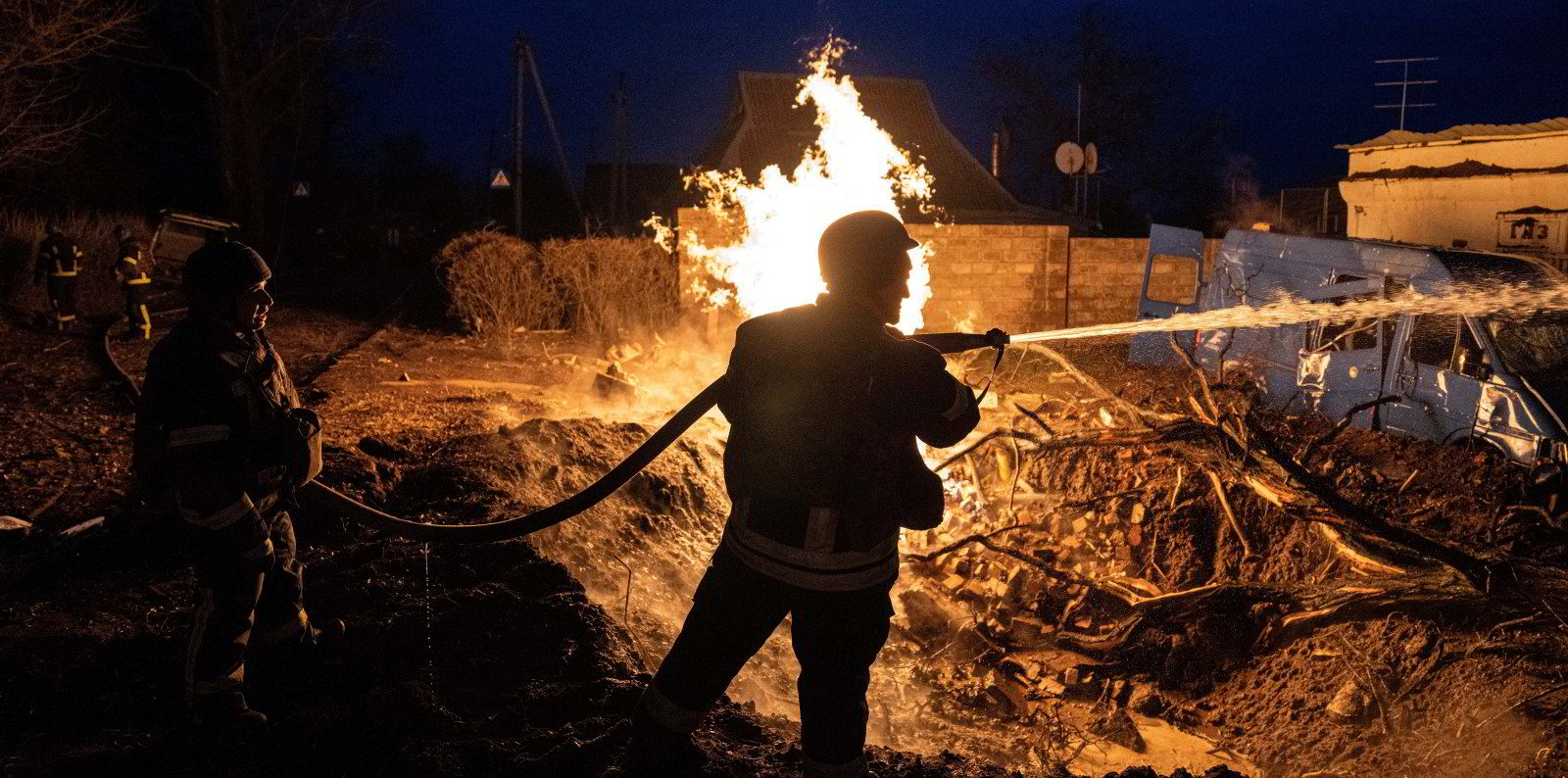Ukraine has moved forward in its efforts to secure alternative supplies to pump natural gas into underground storage facilities this northern hemisphere summer to prepare for the next winter season as Russian gas transit flows across the country remain unstable and may stop completely if the Kremlin decides to further escalate its stand-off with the West.
Ukraine’s gas transmission authority Operator GTS Ukrainy said in a statement that it signed an agreement with Slovakia’s gas pipeline operator Eustream to book minimal import capacity of 42 million cubic metres per day of gas until 30 September.
The previous figure for the booked available capacity from Slovakia stood at 27 MMcmd, Operator GTS said.
Imports of gas from the European market via its interconnectors with Slovakia remain the only viable option for Ukraine to accumulate gas in storage and thus be capable of answering high energy demand during winter if Russian gas monopoly Gazprom chooses to fully halt its transit gas flows across the country to Europe later in the year.
In 2022, Gazprom reduced its gas transit shipments across Ukraine to well below the contracted minimum of more than 109 MMcmd, and pumped just about 40 MMcmd in February and March this year, according to data from the transmission operator.
Such a reduced gas flow entering the country from the east, leaves a limited opportunity for Ukraine to buy some Russian gas while it is still in transit inside the country, from Gazprom’s European customers.
Article continues below the advert
Ukraine’s remaining gas import pipeline connections to transmission networks in Poland, Romania and Hungary have limited capacity that may be increased via investments by network operators in these countries.
Gas availability from Hungary
Meanwhile, Hungary — which last year committed to provide gas import capacity of 8 MMcmd to Ukraine — has leapt forward towards securing higher alternative gas imports to the country, with memoranda of cooperation on energy issues signed in the Romanian capital Bucharest earlier this week.
According to a social network post by Hungary’s Foreign Minister Peter Szijjarto, Hungary and Romania agreed to invest into the pipeline capacity expansion in Romania to enable Budapest to import 2.5 billion cubic metres of gas yearly from Romania’s greenfield offshore gas development project in the Black Sea.
Though Szijjarto has not named this greenfield development, Romania expects just one major offshore project in the Black Sea, Neptun Deep, operated by the country’s OMV Petrom, to come online in 2027.
According to OMV Petrom’s parent company, Austrian oil and gas producer OMV, the project may reach a production plateau of about 140,000 barrels of oil equivalent per day — peak gas production capacity is estimated at 8 Bcm per annum — which would be enough for Romania to satisfy domestic demand and become a net exporter to European markets.
Szijjarto said that higher gas imports from Romania may however start sooner as Bucharest has agreed to transit natural gas from Azerbaijan, arriving via Turkey and Bulgaria, across Romania to Hungary.
Hungary’s decision to seek alternative pipeline gas supplies has come despite its strong ties to Russian gas giant Gazprom with which the country has a long-term contract to import 4.5 Bcm of Russian gas annually via the TurkStream subsea pipeline, crossing the Black Sea and passing Turkey, Bulgaria and Serbia.
Last week, Moscow suddenly announced that it put Hungary on its updated list of “unfriendly states” — countries, that in the Kremlin’s definition, participate or support international sanctions against Russia and its corporations in response to Russia’s invasion of Ukraine.
Hungarian governmental officials have repeatedly objected to the introduction of European sanctions against Russia. Szijjarto has acknowledged differences on Russia with “other countries and neighbouring states” but said that they should not impair energy cooperation with Hungary.

